While many countries struggle to surpass 30% plastic recycling rates, Norway has achieved a figure that seems like science fiction: 97% of all plastic bottles are recycled thanks to a smart system that combines economic incentives, technology, and industry-citizen collaboration. This model, implemented since 1999 and refined over decades, offers a blueprint that any nation could adapt.
How Does the Norwegian System Work?
Basic Mechanism
- Deposit per container: Between €0.15 and €0.30 per bottle (depending on size)
- Widespread return points: 3,700 vending machines (1 per 1,400 inhabitants)
- Immediate refund: Cash, donation to charity, or store credit
- Endless recycling: The material is transformed into new bottles of the same quality
Technology that Makes It Possible
- Unique barcodes: Each container is identifiable and traceable
- Reverse vending machines: Automatically sort by type of plastic
- Optional blockchain: Some supermarkets allow complete cycle tracking
Figures that Demonstrate Its Success
Proven Effectiveness
- Return rate: 97% PET bottles, 95% aluminum cans
- Material quality: 92% of the plastic retains food-grade properties
- Environmental impact: 80% reduction in plastic on Norwegian beaches since 2010
Economically Sustainable
- System cost: €40 million/year (€7.50 per citizen)
- Municipal savings: €150 million in cleaning and waste management
- Job creation: 3,200 direct jobs in management and processing
The 4 Pillars of Norwegian Success
1. Extended Producer Responsibility
- Polluter pays: Packaging companies finance the entire system
- Independent oversight: A non-profit organization (Infinitum) manages operations
- Eco-design incentives: Reduced rates for easily recyclable packaging
2. Maximum Convenience for Citizens
- Extended hours: Machines available 24/7 in supermarkets
- No pre-cleaning: Packaging is processed automatically
- Multiple refund options: Cash, electronic, or donation
3. True Circular Economy
- Bottle to bottle: The material is recycled into food packaging
- Secondary market: Companies They purchase materials for new products.
- Continuous Innovation: Technological improvements financed with profits from the system.
4. Culture of Participation
- Education from childhood: School programs about the system.
- Total transparency: Citizens know the destination of their packaging.
- Collective pride: 94% of Norwegians participate regularly.
How Norway Faced Initial Challenges
Industry Resistance (1999-2005)
- Solution: Demonstrate that the system reduced costs in the long term.
- Result: 85% of bottlers now actively support the system.
Fraud and Abuse
- Problem: Importing empty bottles to collect deposits.
- Solution: Country-specific codes and transaction limits.
Initial Cost
- Investment: €120 million in infrastructure (recovered in 8 years).
- Financing: Soft government loans + industry contributions.
Adapting the Model to Other Countries
Spain: Lost Opportunity and Future Potential
- Waste Law 2025: Gradual Implementation until 2027
- Specific Challenges:
- Mass Tourism: How to manage visitor packaging
- Traditional Commerce: Return points in small establishments
- Recycling Culture: Only 35% of Spaniards separate waste correctly
Developing Countries
- Simplified Version: Lower deposits, community return centers
- Job Creation: People as “collection agents”
- Appropriate Technology: Simpler, locally maintainable machines

Quantified Environmental Impact
Emissions Reduction
- 1 kg of recycled PET = 3 kg less CO₂ vs. new production
- Norway annually: 250,000 tons of CO₂ equivalent avoided
- Equivalent to: 125,000 fewer cars on the road
Resource Conservation
- Oil saved: 150 million liters annually
- Water conserved: 45% less consumption in the production of new packaging
- Natural spaces: 92% less plastic in fjords and forests
Key Lessons for Successful Implementation
System Design
- Sufficiently high deposit: Minimum 15% of the product price
- Infrastructure before obligation: Operational machines before requiring participation
- Flexibility in refunds: Adapt to local preferences
Communication and Education
- Initial mass campaigns: 6 months before launch
- Simple and clear messages: “Money for returning packaging”
- Involve influencers: From celebrity chefs to Athletes
Continuous Evaluation
- Transparent Metrics: Publish monthly return rates by region
- Constant Technological Improvement: Mobile app, faster machines
- Citizen Feedback: Annual satisfaction surveys
The Future: Norway 2030
New Targets
- 98% of all bottles (including glass)
- Zero packaging to landfill by 2028
- Negative carbon footprint in packaging waste management
Innovations in Progress
- Full Blockchain: Complete traceability of every container
- Dynamic Deposit: Varies according to the environmental impact of the container
- Sorting Robots: AI for automatic separation in plants
“We have demonstrated that when you make it easy and profitable to do the right thing, people respond massively. Recycling is not a technical problem, it’s a system design problem” — Kjell Olav Maldum, CEO of Infinitum.



